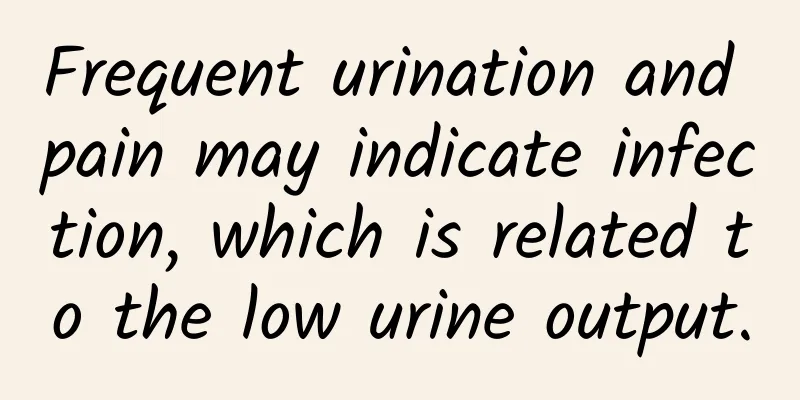Treatment for non-menstrual bleeding

|
We all know that every female friend of ours has a good friend who visits her every month, and that is menstruation. We may bleed a lot during menstruation. Recently, many female friends have experienced bleeding outside of their menstrual period, but they have never encountered similar problems before and began to panic. They don’t know how to treat it. So how should they solve the problem of bleeding outside of their menstrual period? 1. People often hear the term "ovulation bleeding". Western medicine calls it ovulation bleeding, while traditional Chinese medicine calls it "intermenstrual bleeding." This is due to a temporary drop in estrogen levels, which causes the endometrium to lose hormonal support and partially shed, causing regular vaginal bleeding. The amount of this bleeding is not much. Some people only have a small amount of brown secretion. It usually lasts for half a day or 2-3 days, and no more than 7 days at most. It may be accompanied by mild ovulation pain and back pain. If someone is measuring their basal body temperature, they will notice that this bleeding usually occurs during the transition from low body temperature to high body temperature. If the symptoms are mild, no treatment is required, but if the symptoms are obvious and may affect fertility, treatment should be given. 2. Functional uterine bleeding is referred to as dysfunctional uterine bleeding. This disease is very common in clinical practice, mainly caused by abnormal neuroendocrine function regulating reproduction. Its manifestations are usually irregular menstrual cycles, excessive menstrual flow, prolonged menstruation or irregular bleeding. The principle of treatment is to stop bleeding quickly, adjust and establish a normal menstrual cycle after stopping bleeding, and prevent recurrence. Due to long-term bleeding, some people also have varying degrees of anemia, so correcting anemia is also very important. 3. If bleeding occurs after a delay of 7-10 days in the menstrual cycle, do not assume that this is definitely a late menstrual cycle. You should pay attention to whether the amount, color, and duration of bleeding are the same as the normal menstrual cycle. If the menstrual blood is sometimes more and sometimes less, and is continuous, and is accompanied by abdominal pain, you should be careful about the possibility of ectopic pregnancy or threatened abortion; if the bleeding is more than usual, lasts longer, and dysmenorrhea is obvious, it is more common in uterine leiomyoma or endometriosis. It is necessary to seek medical treatment promptly. The treatments for non-menstrual bleeding have been proven to be very effective. Everyone can try to use them. They can help reduce the amount of bleeding during non-menstrual periods. At the same time, special attention should be paid to your diet, lifestyle habits and other aspects to achieve better healing effects. |
<<: What are the traditional Chinese medicine prescriptions for preventing and treating pregnancy?
>>: How to make nipples white?
Recommend
Do you know? Open the door┋World Obesity Day——Practice a healthy lifestyle and achieve a healthy weight goal
Facing the confusion caused by overweight and obe...
Colposcopy bleeding
Generally speaking, there will be no bleeding dur...
Can’t drink milk or eat bananas on an empty stomach? Huaxi doctors remind: What really shouldn’t be eaten on an empty stomach is…
Content Production Editor: Yang Yali Map: Eastern...
What causes pain on the left side of a woman's lower abdomen?
There are many factors that cause lower abdominal...
Is the white discharge a sign of menstruation?
If white discharge comes out on its own, it may b...
What fruits can I eat after IVF?
Women may choose to have children through in vitr...
Symptoms of Trichomonas vaginitis
In clinical medicine, diseases such as candidal v...
Is it normal to have blood on sight?
For pregnant women, the last thing they want to s...
Is the discovery of nodules cancer? The highest incidence rate among Chinese women! The report shows these two numbers or has been confirmed...
Expert of this article: Hu Zhongdong, Chief Physi...
Is the T-ring easy to remove?
With the development of society, there are variou...
Can I practice yoga during my menstrual period?
As yoga culture penetrates deeper and deeper into...
Abnormal menstruation after abortion and its causes
Many women who have had an abortion have some con...
Which is better, breast blood oxygen or color Doppler ultrasound?
Nowadays, many people often undergo various exami...
White discharge from labia
The labia is a part of the female lower body and ...
What to do if you are pregnant with moderate inflammation of TCT
Moderate inflammation of TCT mainly refers to an ...









